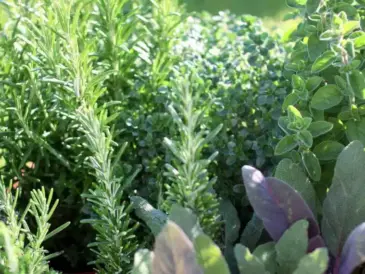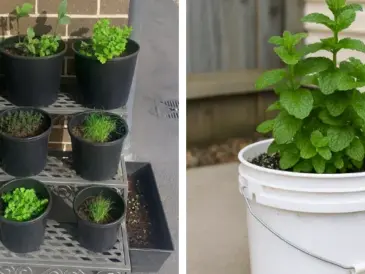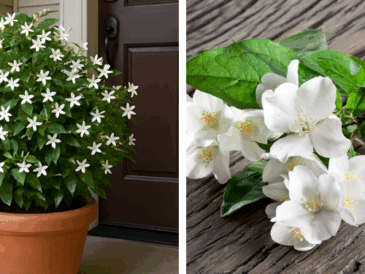Growing tomatoes is a rewarding endeavor for many gardeners, offering the promise of juicy, flavorful fruits that can be enjoyed fresh or in a variety of dishes. However, to achieve a bountiful harvest, it’s crucial to understand the specific needs of tomato plants, particularly when it comes to watering.
While it might seem convenient to water your garden in the evening, especially after a long day, this practice can be detrimental to your tomato plants. In this article, we will explore why evening watering is not recommended and how it can negatively impact the health and productivity of your tomato plants.
1. The Importance of Proper Watering Techniques
Proper watering is essential for the healthy growth of tomato plants. Tomatoes require consistent moisture, but overwatering or underwatering can lead to problems such as blossom end rot or root rot. It’s important to water deeply, ensuring that the soil is moist to a depth of at least 6 inches. This encourages the roots to grow deeper into the soil, providing better support and access to nutrients.
Using a drip irrigation system or soaker hose can help deliver water directly to the soil, minimizing evaporation and ensuring that water reaches the root zone. This method also helps prevent water from splashing onto the leaves, which can reduce the risk of disease.
2. Understanding Tomato Plant Needs
Tomato plants thrive in well-drained soil with a pH level between 6.0 and 6.8. They require about 1 to 1.5 inches of water per week, depending on weather conditions and soil type. It’s important to monitor the soil moisture regularly, as tomatoes are sensitive to fluctuations in water availability.
In addition to water, tomatoes need plenty of sunlight, ideally 6 to 8 hours per day, and regular feeding with a balanced fertilizer to support their growth and fruit production. Understanding these needs is key to maintaining healthy plants and maximizing yield.
3. Why Evening Watering Is Problematic
Watering tomato plants in the evening can create a damp environment that is conducive to the development of fungal diseases. As temperatures drop overnight, the water on the leaves and soil surface does not evaporate quickly, leading to prolonged moisture exposure.
This extended period of wetness can encourage the growth of fungi such as powdery mildew and downy mildew, which thrive in humid conditions. These diseases can weaken the plants, reduce fruit quality, and ultimately decrease yield.
4. Increased Risk of Fungal Diseases
Fungal diseases are a common issue for tomato plants, and evening watering can exacerbate this problem. Diseases like early blight, late blight, and septoria leaf spot are all favored by moist conditions, especially when the foliage remains wet for extended periods.
To minimize the risk of fungal infections, it’s best to water in the morning when the sun can help dry the leaves quickly. This reduces the time the leaves remain wet and lowers the chances of fungal spores germinating and spreading.
5. The Role of Humidity in Disease Development
Humidity plays a significant role in the development and spread of plant diseases. High humidity levels, often present during the evening and night, can create an ideal environment for pathogens to thrive. When the air is saturated with moisture, it can lead to condensation on plant surfaces, further increasing the risk of disease.
By watering in the morning, you allow the sun and wind to reduce humidity levels around the plants, creating a less favorable environment for disease-causing organisms.
6. Soil-Borne Bacterial Threats
In addition to fungal diseases, soil-borne bacterial threats can also be exacerbated by improper watering practices. Bacteria such as Ralstonia solanacearum, which causes bacterial wilt, can spread more easily in wet conditions. When soil remains saturated overnight, it can promote the proliferation of these harmful bacteria.
Maintaining proper drainage and avoiding waterlogged conditions are crucial steps in preventing bacterial infections. Ensuring that your tomato plants are watered at the right time of day can help mitigate these risks.
7. How Watering Timing Affects Plant Health
The timing of watering can have a significant impact on the overall health of tomato plants. Watering in the morning allows plants to take up moisture during the day when they are actively photosynthesizing and growing. This ensures that they have the necessary resources to support their metabolic processes.
Conversely, evening watering can disrupt this natural rhythm, leading to stress and reduced vigor. Plants that are consistently watered at the wrong time may exhibit signs of stress, such as wilting, yellowing leaves, and poor fruit development.
8. The Science Behind Evaporation Rates
Evaporation rates are influenced by temperature, humidity, and wind. During the day, higher temperatures and lower humidity levels promote faster evaporation, which helps dry the soil surface and plant foliage. This is beneficial for reducing disease risk and ensuring that water is efficiently used by the plant.
In the evening, cooler temperatures and higher humidity slow down evaporation, leading to prolonged wetness. Understanding these dynamics can help gardeners make informed decisions about when to water their plants for optimal health and productivity.
9. Popular Gardening Hacks: What Works and What Doesn’t
There are many gardening hacks and tips circulating online, but not all of them are effective or based on sound science. For example, some suggest using mulch to retain moisture and reduce watering frequency. While mulch can be beneficial, it’s important to use it correctly to avoid creating a habitat for pests and diseases.
Another common tip is to water plants with leftover coffee or tea. While these can provide some nutrients, they can also alter soil pH and should be used sparingly. It’s crucial to critically evaluate gardening advice and rely on proven practices for the best results.
10. Best Practices for Watering Tomato Plants
To ensure healthy tomato plants, water them early in the morning, allowing the sun to dry the leaves and soil surface quickly. Use a drip irrigation system or soaker hose to deliver water directly to the root zone, minimizing evaporation and reducing disease risk.
Monitor soil moisture regularly and adjust watering frequency based on weather conditions, ensuring that the plants receive about 1 to 1.5 inches of water per week. Mulching around the base of the plants can help retain soil moisture and regulate temperature, further supporting plant health.
11. Expert Tips for Thriving Tomato Gardens
Experts recommend rotating crops each year to prevent soil-borne diseases and pests from building up in the soil. Companion planting with herbs like basil and marigold can also help deter pests and improve plant health.
Regularly prune tomato plants to improve air circulation and remove any diseased or damaged foliage. This can help reduce the risk of disease and promote better fruit development. By following these expert tips and best practices, you can enjoy a thriving tomato garden with a bountiful harvest.




